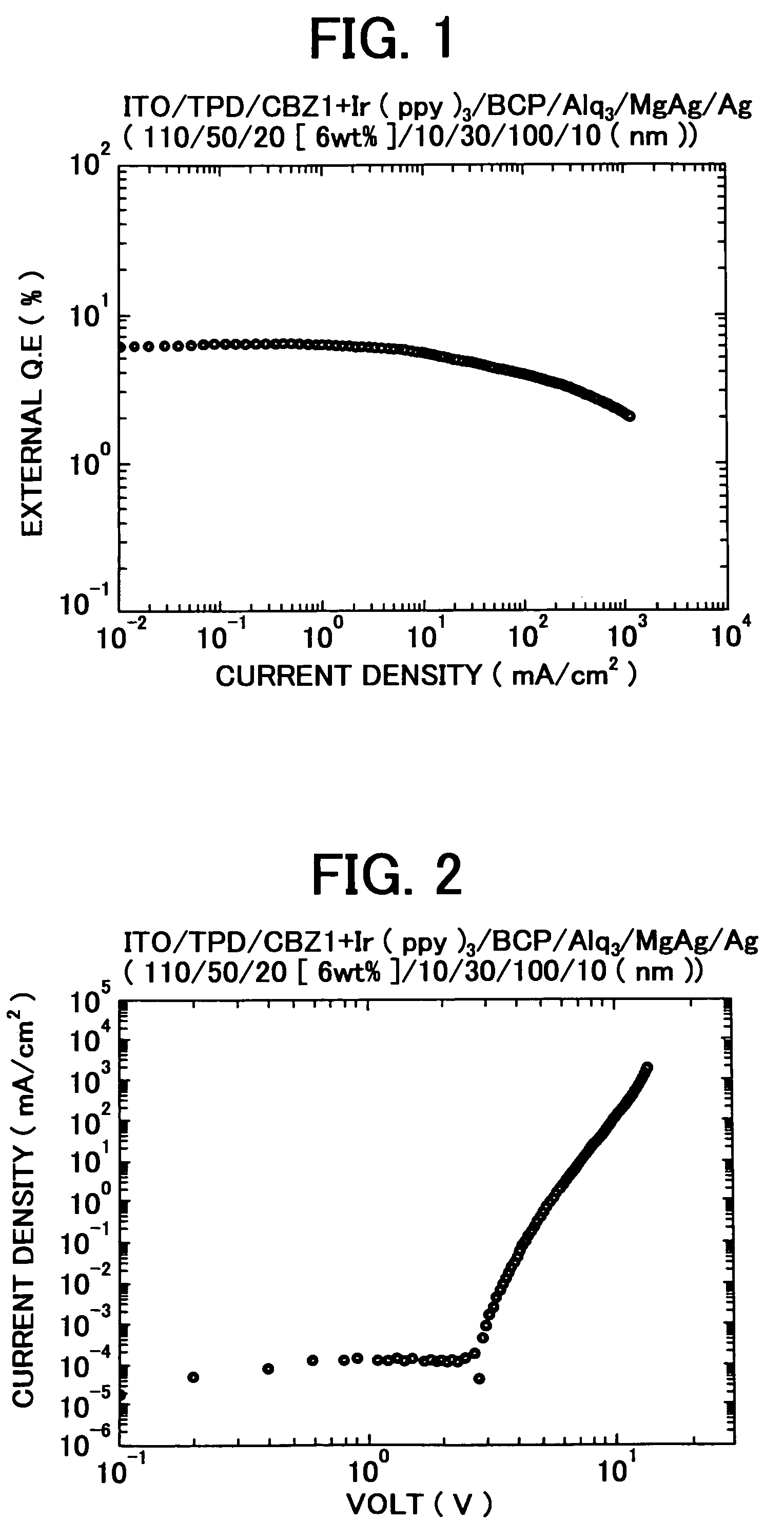3, 6-diphenylcarbazole compound and organic electroluminescent device
a technology of carbazole compound and compound, which is applied in the direction of discharge tube luminescnet screen, other domestic articles, natural mineral layered products, etc., can solve the problems of unstable film, difficult to increase purity, and state of film, so as to suppress the effect of diffusion, joule heat, and deterioration of device durability
- Summary
- Abstract
- Description
- Claims
- Application Information
AI Technical Summary
Benefits of technology
Problems solved by technology
Method used
Image
Examples
manufacturing example 1
[0126]A solution was prepared by adding 20.0 g of 3,6-dibromocarbazole, 20.6 g of 4-methoxyphenylboronic acid, and 2.23 g of tetrakis(triphenylphosphine)palladium into 60 ml of ethanol and 250 ml of toluene. The resulting solution was blended with 120 ml of a 22% aqueous solution of sodium carbonate, and the mixture was heated under reflux in a nitrogen atmosphere for 5.5 hours. Insoluble materials were removed therefrom by performing hot filtration using a filter aid. Thereafter, the organic layer was separated from the aqueous layer, and the solvent was distilled off under a reduced pressure. After washing with water and drying were performed, 20.2 g of a light brown powder was prepared. The resulting powder was recrystallized in a mixed solvent of toluene / ethanol and, thereby, 13.5 g of a colorless needle crystal of 3,6-bis(4-methoxyphenyl)carbazole was produced. The physical properties thereof were as follows.
[0127]melting point: 213.0° C. to 214.0° C.
[0128]elemental analysis va...
manufacturing example 2
[0134]A solution was prepared by mixing 13.4 g of 3,6-bis(4-methoxyphenyl)carbazole, 40 ml of iodobenzene, 19.3 g of potassium carbonate, and 1.0 g of copper powder, and heating the mixture under reflux in a nitrogen atmosphere for 3 hours. After cooling was performed to 100° C., toluene was added thereto, and insoluble materials were removed therefrom using a filter aid. The solvent was distilled off under a reduced pressure and, thereafter, washing was performed with methanol. As a result, 14.8 g of a colorless needle crystal of 3,6-bis(4-methoxyphenyl)-9-phenylcarbazole (referred to as CBZ1) was produced. The melting point thereof was as follows.
[0135]melting point: 169.5° C. to 170.5° C.
[0136]The resulting crystal was recrystallized in a mixed solvent of toluene / ethanol, and thereby a colorless needle crystal was produced. The physical properties thereof were as follows.
[0137]melting point: 170.0° C. to 171.0° C.
[0138]elemental analysis value (%):
[0139]measured value / calculated ...
manufacturing examples 3 to 7
[0142]3,6-Diphenylcarbazole derivatives of the present invention shown in Table 1 were produced in the same manner as in Manufacturing Example 2 except that iodine compounds suitable for producing compounds shown in Table 1 were used in place of iodobenzene in Manufacturing Example 2. The analytical results are also shown in Table 1.
PUM
 Login to View More
Login to View More Abstract
Description
Claims
Application Information
 Login to View More
Login to View More - R&D
- Intellectual Property
- Life Sciences
- Materials
- Tech Scout
- Unparalleled Data Quality
- Higher Quality Content
- 60% Fewer Hallucinations
Browse by: Latest US Patents, China's latest patents, Technical Efficacy Thesaurus, Application Domain, Technology Topic, Popular Technical Reports.
© 2025 PatSnap. All rights reserved.Legal|Privacy policy|Modern Slavery Act Transparency Statement|Sitemap|About US| Contact US: help@patsnap.com



